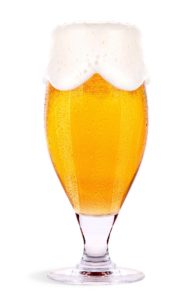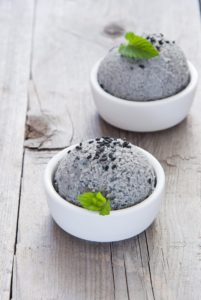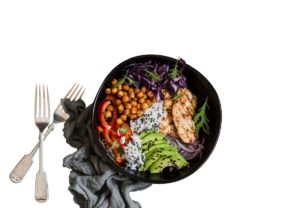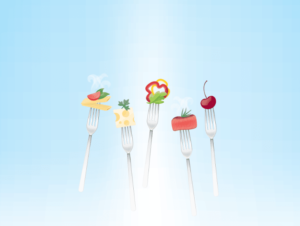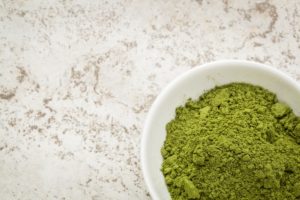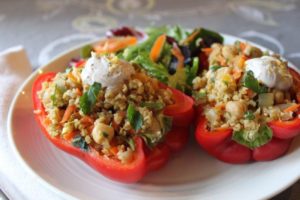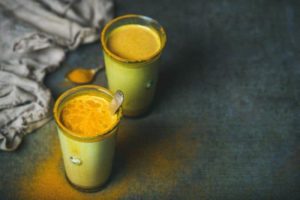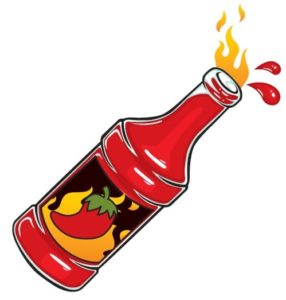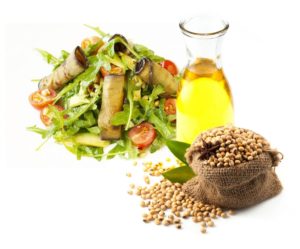Supplements/Ergogenic Aids
Alcohol May Boost Cancer Risks
Previous studies have associated light to moderate alcohol consumption with a lower risk for cardiovascular disease and maybe even diabetes, according to the Harvard T.H. Chan School of Public Health’s Nutrition Source, but teetotalers may have a leg up on avoiding cancer.
Waste Not, Want Not
In America, 30%–40% of the food supply goes to waste, the U.S. Department of Agriculture estimates. You probably know by now that most “use-by” and “best-by” dates are not toss-out dates, and you’re likely monitoring the contents of your fridge so you use as much of your food as possible before it goes bad. But you may be less aware of another important way to take a bite out of food waste.
Ask the RD
Question: I bought tahini to make hummus, and now I have most of the jar left. Are tahini and sesame seeds nutritious, and what else can I use them for?
Informed Protein Consumption
It’s true: Muscles do thrive on protein. In combing through 49 high-quality studies involving 1,863 men and women, a team of international researchers found a strong link between protein supplementation intake and increased muscle size and strength among those who regularly engaged in resistance training, according to a study in the January edition of the British Journal of Sports Nutrition.
Low-Fat Versus Low-Carb: It’s A Draw
We have more proof that no single diet reigns supreme. Slashing either carbs or fats can trim the waistline to the same degree, according to a major study from Stanford University School of Medicine in conjunction with the U.S. National Institutes of Health. The study was published in JAMA in February.
Slow and Steady Wins the (Fat Loss) Race
Mealtime is a good time to remember the saying “slow as molasses.” Research published in the journal BMJ Open in February found that Japanese adults with type 2 diabetes who reported a habit of wolfing down their meals were 29% more likely to be overweight than those who ate at a normal pace. Fast eaters were 42% more likely to exceed weight norms than people who lingered over their meals for an especially long time.
Health at Every Size: A Sound Approach to Behavior Change
The correlation between obesity and chronic disease is well established (Bacon & Aphramor 2011; Bombak 2014; Penney & Kirk 2015). Causality, however, is not so clear (Bombak 2014).
For decades, efforts to fight chronic disease have focused primarily on obesity—encouraging dieting as the best way to lose weight. But even as the U.S. weight loss industry has grown to $58.6 billion annually, we haven’t seen significant improvements in rates of chronic disease (Bacon & Aphramor 2011).
A Handy Way to Count Calories
If you want to lose weight, you know that calories matter. But in most cases, meticulously counting calories is not the solution. That approach is often tedious, inexact and unsustainable—and when eating becomes too complicated, people are more likely to give up and fall back on old habits.
So what can you do? The key is to find ways to eat quality foods in appropriate amounts.
Low-Fat Versus Low-Carb Diet? It’s a Draw
For decades researchers have sought to find the best diet to help people achieve the elusive goal of permanent weight loss. In the context of a worsening obesity epidemic and massive efforts underway to attempt to curb it, health professionals and the public are hungry for an answer. What diet will best help us improve the weight and health status of the most people?
Nutrition and Behavior Change: The Killer App
Since its inception in 2016, the IDEA World Nutrition & Behavior Change Summit has become the go-to event for health and fitness pros interested in using the most innovative approaches to helping clients achieve sustainable change. Some of the world’s top researchers and educators have presented on this rich program and this year’s lineup, scheduled for June 29–30, is no exception. As a bonus, attendees can earn 12 CPEUs/CECs.
Ask the RD: Is Moringa Powder Similar to Matcha?
Answer: Green moringa powder is made from the dried leaves of
the moringa tree, also known as the drumstick tree, and is used in drinks and smoothies like matcha powder, although it doesn’t contain caffeine. Like green tea and leafy green vegetables, moringa leaves are high in antioxidant compounds. They have been used as food and traditional medicine for hundreds of years and reputedly have anti-inflammatory effects, help reduce blood pressure, lower blood sugar and cholesterol levels, and may have anticancer properties (Leone et al. 2015; Stohs & Hartman 2015).
Recipe for Health: Freekeh-Stuffed Peppers
When it comes to grains in our diet, we now have more proof that whole is a whole lot better. In a study published last October in Gut, a team of Danish researchers assigned 50 adults to follow one of two diets for 2 months—one where all grains consumed were unrefined varieties, like brown rice and oats, and one where most grains were refined options, such as white rice and white pasta.
Question of the Month
If we want people to eat better, we need to acknowledge that pears cost more than potato chips. A study from Drexel University, Philadelphia, published in a recent edition of the International Journal of Environmental Research and Public Health, showed that the difference in the cost of healthy foods versus their unhealthy counterparts plays a significant role in whether people follow a nutritious diet.
Ask the RD: Is “Golden Milk” Really Healthy?
Question: My favorite coffee shop now serves Golden Milk, which is warm coconut milk or cow’s milk infused with turmeric. I love the flavor, but is it really as healthy as they say?
Restaurant Critics Are Social
It turns out there’s a social media spillover effect from those calorie postings popping up on more restaurant menus. A 2017 report in Marketing Science discovered that health mentions about foods at 9,805 eateries in New York—where chain restaurants are now required to post calorie counts on their menus—increased significantly in 761,962 online reviews that followed the implementation of calorie posting.
Bobbing for Apples
If you’re concerned about any lingering pesticides on your apples (after all, they are among the most heavily sprayed crops in America) but the price of organic causes too much pain at the checkout, then consider giving your fruit a baking soda bath.
Another Sugar Downer
Consuming too many sweet drinks, doughnuts and chocolate bars may lead not only to a belly bulge but also to a sour mood. After accounting for confounding factors like socio-economic status, body weight and smoking, researchers from University College London found a link between high sugar intake and mental conditions like depression and anxiety in men, according to research published in the July 2017 edition of Scientific Reports.
Want to Eat Less Salt? Try Adding Pepper
Most Americans consume well over the daily recommended intake of sodium (hello, packaged and restaurant foods), but turning up the heat on your meals may help you get by with less, according to the American Heart Association’s journal Hypertension.
Attack of the Snacks
Our increasingly harried lives are driving a shift toward eating more grab-and-go snack foods instead of sit-down meals, but research published in Appetite in January 2018 shows that just seeing the word snack on a food label may lead us to eat more.
Fatten Up Your Salads
Mary Poppins famously advised that “a spoonful of sugar helps the medicine go down.” Now, it looks like a spoonful of oil helps nutrition levels go up—if we apply the right oils to certain veggies. In a study published recently in The American Journal of Clinical Nutrition, researchers at Iowa State University found that subjects who ate salads with added soybean oil absorbed several key nutrients and antioxidants, including beta-carotene, vitamin E, vitamin K and lycopene, better than when they munched on salads minus the oil.
